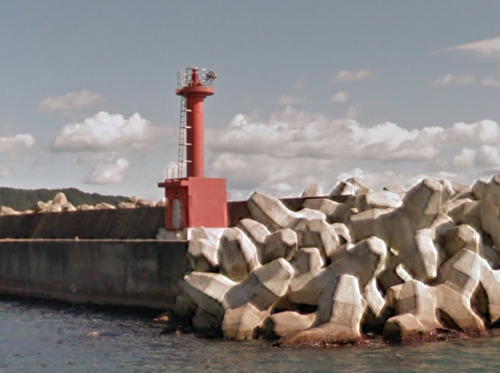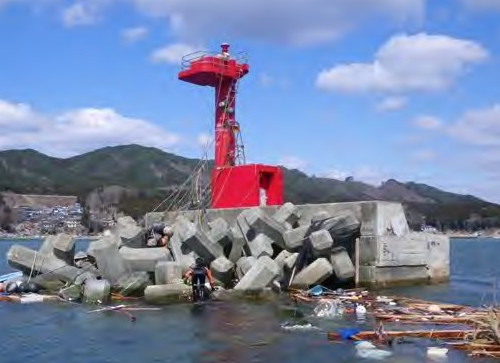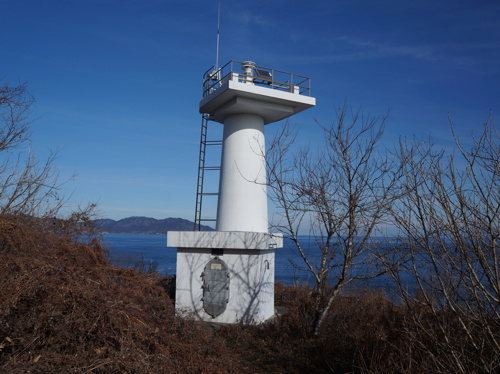The nation of Japan, known in Japanese as Nihon or Nippon (日本), occupies an archipelago off the east coast of Asia. The four main islands are Hokkaidō in the north, Honshū (the largest) in the center, Shikoku in the south, and Kyūshū in the southwest. The country includes thousands of other islands of all sizes; among them the Ryūkyū (Nansei) Islands are a long chain extending to the southwest and including the large island of Okinawa, and the Nanpō Islands are another long chain extending south into the Pacific Ocean. Much of Japan is mountainous but the coastal regions are densely populated and urbanized; the country's population is about 126 million.
Japan is divided into 47 prefectures. This page lists lighthouses of Iwate Prefecture, near the northeastern corner of Honshū, Japan's largest island. Iwate is the largest prefecture of Honshū. The coast of Iwate, called the Rikuchū Coast (Rikuchū Kaigan), is mostly rugged and spectacular--and dangerous to navigation. For 180 km (115 mi) south of Kuji a narrow strip of land along the coast has been preserved as the Rikuchū Kaigan National Park. Most of these lighthouses are located in the park.
This coast was devastated by the Tōhoku earthquake and tsunami of 2011 March 11. Most of the lighthouses are high enough above the sea to escape the tsunami; most were damaged by the earthquake but all have been returned to service. A number of harbor lights were overturned or destroyed by the tsunami; most but not all have been replaced.
In Japanese the word for a lighthouse is tōdai or toudai (灯台). The words saki and misaki are for capes and headlands, hana ("nose") is a promontory, hantō is a peninsula, shima (also spelled sima or jima) is an island, bae is a reef, iwa or shi is a rocky reef, amase or se is a shoal, wan is a bay, nada is a sound or basin, kaikyō is a strait, kawa is a river, and kō or minato is a harbor.
Lighthouses in Japan are operated and maintained by the Japanese Coast Guard's Maritime Safety Agency. On Honshū there is usually one Coast Guard Section Office in each prefecture; for Iwate the section office is at Kamaishi.
ARLHS numbers are from the ARLHS World List of Lights. JCG numbers are the Japanese Coast Guard's light list numbers. Admiralty numbers are from volume M of the Admiralty List of Lights & Fog Signals. U.S. NGA List numbers are from Publication 112.
- General Sources
Lighthouses in Japan - Iwate - A site providing photos and data for most major Japanese lighthouses.
- Lighthouse-Japan.com - Iwate
- Another comprehensive site with photos and notes from visits to many lighthouses.
- Form of a Lighthouse - Iwate Prefecture
- This web site, cited below as FOAL, has photos for many lighthouses in Iwate.
- Lighthouse Visits
- Another excellent source of photos of Japanese lighthouses.
- Misty's Japanese Lighthouse Tour - Iwate
- Photos and notes for lighthouses in all parts of the country.
- Lighthouses in Iwate Prefecture
- Photos by various photographers available from Wikimedia.
- Second Region Lighthouse Story
- Posted by the Coast Guard region office in Aomori, an interactive map linking to information on the major lighthouses.
- Online List of Lights - Japan - Honshu East Coast
- Photos by various photographers posted by Alexander Trabas.

Kuro Saki Light, Fudai, September 2024
Instagram photo by atsem758










